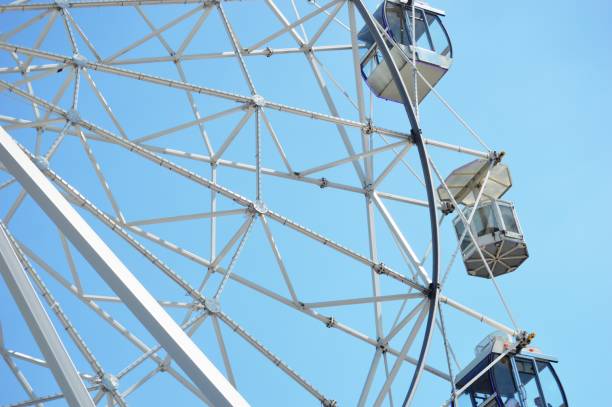Constructing a Ferris wheel requires careful planning, precise engineering, and diligent assembly. From site selection to final testing, each step plays a crucial role in building a stable, safe structure that stands as a focal point in any amusement park. Below is a breakdown of the key stages in building a Ferris wheel.
1. Planning and Site Selection
The process begins with choosing an ideal location. Engineers assess soil conditions, load-bearing capacity, and accessibility within the park. Proper site selection ensures both stability and visibility. Permits and approvals are also essential at this stage, requiring compliance with local construction and safety standards.
2. Structural Design
Once the site is determined, engineers draft detailed designs. The Ferris wheel building process requires precise calculations to account for wind forces, weight, and other stress factors. Steel is commonly used for the frame, while lighter, weather-resistant materials are selected for gondolas. This planning ensures durability, safety, and operational efficiency.
3. Laying the Foundation
A robust foundation is critical for supporting the Ferris wheel’s weight and movement. Construction crews excavate the site, setting up reinforced concrete foundations. Steel reinforcements are embedded, and concrete is poured to create a stable base. Once cured, the main support columns and axle are secured, establishing a firm groundwork.
4. Erecting the Support Structure
With the foundation ready, the next step is building the support framework. Cranes lift large steel beams into place, forming a strong frame that anchors the axle and wheel. Each component is bolted and welded securely, while engineers inspect alignment to ensure structural integrity. This support structure is a crucial part of the amusement park equipment, ensuring stability and safety during operation.
5. Installing the Axle and Bearings
The axle is one of the most critical parts, allowing the wheel to rotate. This heavy-duty steel component is lifted and attached to the support structure, fitted with high-capacity bearings to ensure smooth movement and reduce friction. Proper alignment of the axle is essential for operational safety.
6. Wheel Frame Assembly
The wheel’s frame, often assembled in segments, is lifted into place and connected to the central axle. Radial spokes and circular supports are fastened together, forming the iconic Ferris wheel shape. Engineers check alignment during this stage to ensure the wheel remains balanced and stable.
7. Gondola Installation
Gondolas are attached at strategic points along the wheel, each with safety restraints and mechanisms to secure passengers. Some designs allow for slight swinging, enhancing the ride experience. Proper installation and testing of these cabins are vital for both comfort and safety.
8. Electrical and Mechanical Systems
The amusement park equipment involves complex systems for movement and control. The motor system rotates the wheel, while braking systems control stops and starts. Wiring connects these components to an operator’s control panel, which oversees ride functions. All systems are tested for reliable, smooth operation.
9. Testing and Final Inspection
Before opening to the public, the Ferris wheel undergoes extensive tests. Load and operational tests verify stability and control, while inspectors check every component for compliance with safety standards. Final certification is obtained once all tests are passed.
Conclusion
Ferris wheel construction is a meticulous process involving careful planning, precise assembly, and rigorous testing. From foundation work to electrical systems, each stage ensures a safe, iconic structure that will bring joy to park visitors for years to come.



